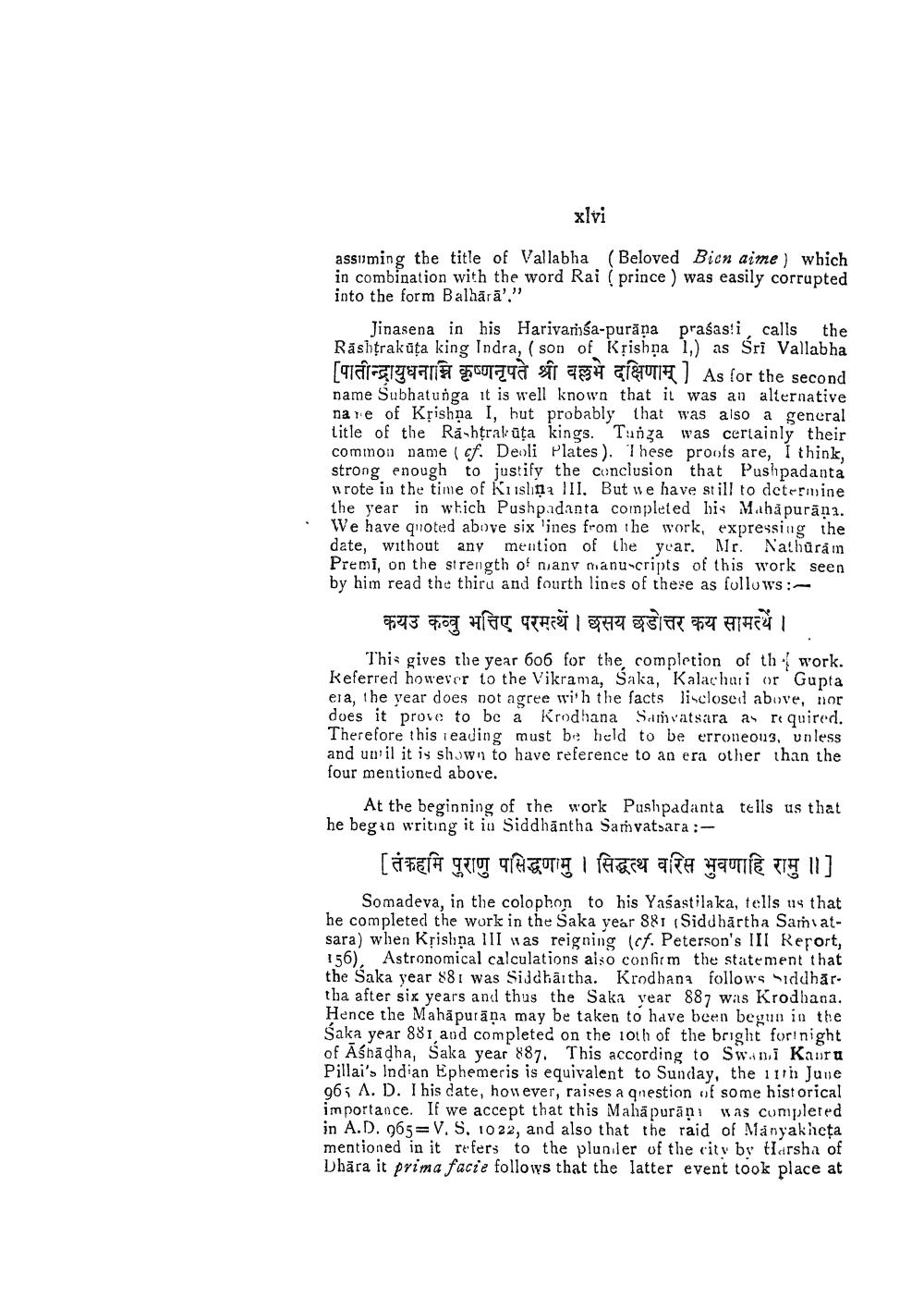________________
xlvi
assuming the title of Vallabha (Beloved Bicn aime ) which in combination with the word Rai (prince ) was easily corrupted into the form Balhārā'."
Jinasena in his Harivarisa-purāņa prasasti, calls the Rashtrakūta king Indra, ( son of Kțishna 1,) as Sri Vallabha [quái siqqan gcurata sîr 79 C UTIH ] As for the second name Subhatunga it is well known that it was an alternative nare of Krishna I, but probably that was also a general title of the Rashtrakūta kings. Tunga was certainly their common name (cf. Deoli Plates). These proofs are, I think, strong enough to justify the conclusion that Pushpadanta wrote in the time of Kiislina III. But we have still to determine the year in which Pushpadanta completed his Mahapurāņi. We have quoted above six lines from the work, expressing the date, without any mention of the year. Mr. Nathuram Premi, on the strength of niany manuscripts of this work seen by him read the thiru and fourth lines of these as follows:
कयउ कव्वु भत्तिए परमत्थे । छसय छडोत्तर कय सामत्थे ।
This gives the year 606 for the completion of th work. Keferred however to the Vikrama, Saka, Kalachuri or Gupta era, the year does not agree with the facts lisclosed above, nor does it prove to be a Krodhana Samvatsara as required. Therefore this reading must be held to be erroneous, unless and unil it is shown to have reference to an era other than the four mentioned above.
At the beginning of the work Pushpadanta tells us that he bego writing it in Siddhāntha Samvatsara :
[ågah gera THGUTIA I Phat afte HTUTI TIE 11]
Somadeva, in the colophon to his Yasastilaka, tells us that he completed the work in the Saka year 881 (Siddhārtha Sariatsara) when Krishna III was reigning (cf. Peterson's III Resort, 156). Astronomical calculations also confirm the statement that the Saka year 881 was Siddhartha. Krodhana follows Siddhar. tha after six years and thus the Saka vear 887 was Krodhana. Hence the Mahāpurāna may be taken to have been begun in the Saka year 881 and completed on the oth of the bright for night of Ashādha, Saka year 887. This according to Swami Kauru Pillai's Indian Ephemeris is equivalent to Sunday, the 11th June 96; A. D. I his date, however, raises a qnestion of some historical importance. If we accept that this Mahāpuran was completed in A.D. 965= V. S. 1022, and also that the raid of Manyakheta mentioned in it refers to the plunder of the city by tiarsha of Dhāra it prima facie follows that the latter event took place at




